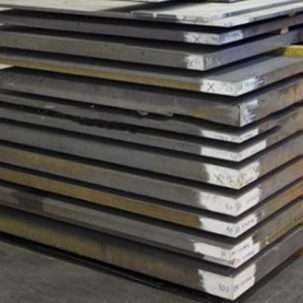Inconel Alloy 690
- Resistance to heated nitric acid with fluoride
- Top-notch mechanical properties & high ductility
- Resistance to sulphidation, oxidation, & metal dusting
- Doesn’t crack from stress corrosion by alkalis
Description
Overview:
Created from a unique combination of nickel-iron-chromium, the Inconel Alloy 690 is perfect to be used in different types of oxidizing media. It houses an approximate of 30% chromium, which caters it an excellent aqueous media resistance.
This alloy has amazing resistance to several variants of corrosive media when kept at high temperatures. It possesses excellent fabrication characteristics & high rupture strength. The presence of a high amount of nickel ensures there is minimal to zero cracking from stress-corrosion.
Common Names:
- UNS N06690
- Alloy 690
- Nr.2.4642
- ISO NW6690
Executive Standards:
Bar, Rod, Forging Stock, & Wire
- ASTM B166
- ASME SB 564
- MIL-DTL-24801
- ASME SB 166
- ISO 9723
- ASTM B 564
- ASME Code Case N-525
Seamless Tube & Pipe
- ASTM B 163
- ASME SB 167
- ASME SB 163
- ASME SB 829
- ASTM B 167
- ISO 6207
- MIL- DTL-24803
- N- 20, N-525
- ASTM B 829
- ASME Code Cases 2083
Strip, Plate, & Sheet
- ISO 6208
- ASME SB 168
- ASTM B168
- ASME N-525
- MIL-DTL-24802
Chemical Properties:
| Chromium (%) | 27.0 to 31.0 |
| Nickel (%) | 58.0 Minimum |
| Carbon (%) | 0.05 Maximum |
| Iron (%) | 7.0 to 11.0 |
| Silicon (%) | 0.50 Maximum |
| Sulfur (%) | 0.015 Maximum |
| Manganese (%) | 0.50 Maximum |
| Copper (%) | 0.50 Maximum |
Mechanical Properties:
| Yield Strength | Ksi | 35 Minimum |
| MPa | 240 Minimum | |
| Tensile Strength | Ksi | 86 Minimum |
| MPa | 590 Minimum | |
| Elongation | % | 30 Maximum |
Physical Properties:
| Density | lb/in3 | 0.296 |
| Mg/m3 | 8.19 | |
| Specific Heat | Btu/lb-°F | 0.107 |
| J/kg-°C | 450 | |
| Melting Range | °F | 2450 to 2510 |
| °C | 1343 to 1377 | |
| Permeability | 200 Oersteds | 1.001 |
| Electrical Resistivity | ohm-circ mil/f | 69.1 |
| μΩ-m | 1.148 | |
| Young’s Modulus | Ksi | 30.6 x 103 |
| GPa | 211 | |
| Poisson’s Ratio | – | 0.289 |
Key Features:
- Machinability: Inconel 690 is easily machinable with the use of conventional machining that is performed by bringing in commercial coolants.
- Weldability: Inconel Alloy 690 is welded with the use of metal-arc, gas-tungsten arc, gas-metal arc, as well as submerged-arc.
- Easy Hardening: Inconel 690 has been designed to be hardened easily for industrial usage. It generally requires the use of a cold working process to be hardened.
Product Forms Available:
- Rod
- Bar
- Forging Stock
- Wire
- Tube
- Pipe
- Strip
- Plate
- Sheet
Applications:
- Furnaces
- Duct Work
- Burners (High Temperature)
- Petrochemical Heaters
Possible Alternative Grades:
- Incoloy 800:
When kept at elevated temperatures, Incoloy 800 offers oxidation resistance, sulfidation, as well as carburization.
- Inconel 600:
When used at standard operating temperature, Inconel 60 is an optimum alternative for Inconel 690 with lower thermal conductivity.
- Inconel 617:
This strengthened & solid solution alloy brings in exceptional oxidation resistance & strength in elevated temperatures.
Frequently Asked Questions:
- How is Alloy 690 different from austenitic SS?
The Alloy 690 flaunts a higher rate for work hardening as compared to the austenitic SS, which is why it should always be cold worked post-annealing.
- How does the Alloy 690 work in acidic mediums?
The Alloy 690 shows exceptional resistance to mixtures that include hydrofluoric and nitric acid.
- How to ensure stable machining for Alloy 690?
Heat dissipation via the use of suitable quantity aqueous lubricants ensures highly-stable machining for the alloy 690.
Get A Free Quote Now!







